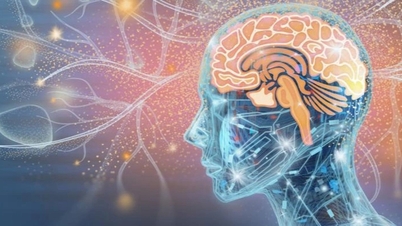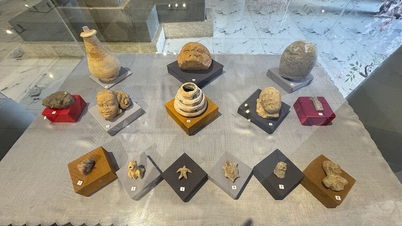Thanks to advances in neuroscience and cognitive psychology, there is growing evidence that memory can be improved through habits and techniques that affect the brain at both the cellular and behavioral levels.
Memory acts as an invisible thread that connects the past to the present, shaping the way we learn and experience.
But to maintain that sharpness, the brain needs to be properly nourished. Studies show that from diet, sleep to learning methods, all have a direct impact on the formation and retention of memories.
Understanding these mechanisms helps each person proactively protect memory, maintain clarity and improve the ability to absorb information.
1. Build healthy habits for the brain
Physical and cognitive health are closely linked. A diet rich in omega 3s, vitamins and antioxidants helps reduce oxidative stress and protect nerve cells from damage.

Studies show that DHA, a form of omega-3 found in fatty fish and nuts, plays an important role in signal transmission and supporting the functioning of the hippocampus, the brain region directly involved in learning and memory.
Diets rich in vegetables, berries, nuts and fish have been shown to reduce the risk of age-related memory decline.
Sleep is also an important pillar. During deep sleep and REM sleep, the brain sorts information, consolidates what it has learned during the day, and transfers it from short-term to long-term memory. Prolonged sleep deprivation disrupts this process, leading to poor learning and significantly reduced recall.
Moderate to vigorous aerobic exercise at least three times a week increases blood flow to the brain, stimulating the formation of new neurons in the hippocampus. In addition, physical activity increases levels of BDNF, an important protein that helps maintain healthy neural networks.
A combination of proper nutrition, adequate sleep, and regular exercise creates a solid foundation for memory to remain stable and flexible throughout life.
2. Spaced learning and active recall practice
Cognitive psychology has demonstrated that the two most effective learning techniques for increasing long-term memory are spaced learning and active retrieval.
Spaced learning is based on the principle of reviewing information at gradually increasing intervals. Reviewing information just before it fades from memory increases its durability. The ideal model might be to review after one day, three days, a week, and then a month. This allows the brain to gradually consolidate information and store it permanently.
Active recall is the process of testing yourself on information rather than passively reading it. Trying to recall from scratch, using flashcards, or asking yourself questions forces your brain to activate memory pathways, making them stronger. Each successful recall is equivalent to a retraining of neural connections.
When combined, these two techniques create an optimal loop: spaced learning determines when to review, and active recall determines how to review effectively. Many applications such as Anki or Quizlet have integrated this principle, making learning more systematic and scientific.
3. Memory Palace: Turning Imagination into a Powerful Tool
The memory palace method, or method of loci, is a memory technique based on the brain's ability to record images and spaces.
Humans are much better at remembering locations than abstract information, so placing information in familiar spaces can turn hard-to-remember facts into easily recalled images.
The idea is simple: choose a familiar space like your home, your commute, or your classroom. Then, “place” each piece of information in specific locations within that space using vivid, sometimes slightly exaggerated, images to help your brain retain it.
When you need to remember, you just need to “walk” in that space in your mind. Thanks to the superior visual memory ability, the brain will automatically restore the information.
Several MRI studies have observed increased activity in the hippocampus and other spatial processing areas in people who use the memory palace method. This explains why this technique is chosen by many memory champions around the world .
While it takes practice, the method of loci can be a powerful tool for memorizing long lists, speeches, or complex information. The creativity with which you use your imagination will determine how effective this technique is.
4. Learn a new skill to activate neuroplasticity
Learning a new skill not only improves personal abilities but is also an effective way to exercise the brain.
Learning a musical instrument, trying a new language, or engaging in a cognitive activity all stimulate the brain to form new networks of connections, creating neuroplasticity. This is the fundamental mechanism by which memory adapts and develops.
Studies show that adults who regularly learn new skills have slower rates of cognitive decline, better memory retention, and improved problem-solving abilities. Even short, but consistent, periods of practice can lead to positive changes in working memory and attention.
The important thing is that the skill must be challenging enough to push the brain out of its comfort zone. Every time it is exposed to something new, the brain activates its self-renewal mechanism, creating more pathways for storing and processing information. This helps the memory become flexible, resilient and sustainable.
Source: https://dantri.com.vn/khoa-hoc/4-cach-bao-ve-va-cai-thien-tri-nho-hieu-qua-20251121024614395.htm




![[Photo] General Secretary To Lam receives President of the Senate of the Czech Republic Milos Vystrcil](/_next/image?url=https%3A%2F%2Fvphoto.vietnam.vn%2Fthumb%2F1200x675%2Fvietnam%2Fresource%2FIMAGE%2F2025%2F11%2F21%2F1763723946294_ndo_br_1-8401-jpg.webp&w=3840&q=75)
![[Photo] President Luong Cuong receives Speaker of the Korean National Assembly Woo Won Shik](/_next/image?url=https%3A%2F%2Fvphoto.vietnam.vn%2Fthumb%2F1200x675%2Fvietnam%2Fresource%2FIMAGE%2F2025%2F11%2F21%2F1763720046458_ndo_br_1-jpg.webp&w=3840&q=75)
![[Photo] National Assembly Chairman Tran Thanh Man holds talks with President of the Senate of the Czech Republic Milos Vystrcil](/_next/image?url=https%3A%2F%2Fvphoto.vietnam.vn%2Fthumb%2F1200x675%2Fvietnam%2Fresource%2FIMAGE%2F2025%2F11%2F21%2F1763715853195_ndo_br_bnd-6440-jpg.webp&w=3840&q=75)
![[Photo] Visit Hung Yen to admire the "wooden masterpiece" pagoda in the heart of the Northern Delta](/_next/image?url=https%3A%2F%2Fvphoto.vietnam.vn%2Fthumb%2F1200x675%2Fvietnam%2Fresource%2FIMAGE%2F2025%2F11%2F21%2F1763716446000_a1-bnd-8471-1769-jpg.webp&w=3840&q=75)







































































































Comment (0)